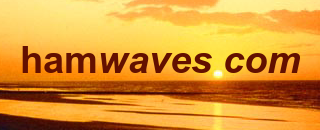World Atlas of Ground Conductivity
Serge Stroobandt, ON4AA
Copyright 2002-2018, licensed under Creative Commons BY-NC-SA
- Home
- Atlas of Ground Conductivity
TO DO: WWV & References
Importance
It is important to know the conductivity (and permittivity!) of the soil around your HF station for two good reasons:
- It allows to model power loss to the ground in the near-field of HF antennas —both vertical and horizontal—,
- It allows to accurately calculate radiation patterns of HF antennas, taking into account ground reflections.
Measurement
In literature, a number of ways to measure ground conductivity and permittivity have been described. Most notably, Rudy Severns, N6LF wrote two excellent papers on the subject.
Nonetheless, it is not particularly inciting having to construct a measuring apparatus just for using it once or twice. Moreover, the area of land that most influences the radiation pattern is at about 10λ away from your antenna, and is therefore often not accessible for measurements. I am by no means discouraging ground conductivity measurements. However, in practice, most people —including myself— prefer spending time differently.
Ground conductivity atlas

- Quite a while ago, the CCIR (now ITU-R) published Recommendation 832, containing a detailed world atlas of ground conductivities. The maps are for VLF and MF frequencies, though the MF maps still remain useful for the lower HF frequencies. One can easily be misled by the bookmarks in this PDF document. Be sure to scroll down at least to Figure 7 in this atlas to get to the MF maps; preceeding maps are for VLF! An example MF conductivity map of my home country Belgium is shown below.
Download

Belgian MF ground conductivity map in mS/m, standardised at 1MHz. Source: CCIR Rec. 832
Ground types
| soil description | ground quality | σ (S/m) | εr |
|---|---|---|---|
| cities, industrial areas | very poor | 0.001 | 5 |
| sandy, dry, flat, coastal | poor | 0.002 | 10 |
| rocky soil, steep hills, typically mountainous | poor | 0.002 | 13 |
| pastoral, medium hills, forestation, heavy clay soils | good/average | 0.005 | 13 |
| pastoral, low hills, rich soil | very good | 0.0303 | 20 |
| salt water | excellent | 5.0 | 81 |
| soil description | σ (S/m) | εr |
|---|---|---|
| polar ice cap | 0.0001 | 1 |
| city industrial area | 0.0001 | 3 |
| polar ice | 0.0003 | 3 |
| city industrial; maximum attenuation | 0.0004 | 3 |
| arctic land | 0.0005 | 3 |
| sea ice | 0.001 | 4 |
| poor | 0.001 | 5 |
| city industrial; average attenuation | 0.001 | 5 |
| dry, sandy, coastal | 0.001 | 10 |
| fresh water | 0.001 | 80 |
| fresh water 10°C; @100 MHz | 0.001 | 84 |
| mountainous hills < 1000 m | 0.002 | 5 |
| fertile land | 0.002 | 10 |
| rocky, steep hills | 0.002 | 15 |
| moderate | 0.003 | 4 |
| medium hills and forest | 0.004 | 13 |
| average | 0.005 | 13 |
| highly moist ground | 0.005 | 30 |
| fresh water 20°C; @100 MHz | 0.005 | 80 |
| pastoral hills, rich soil | 0.007 | 17 |
| marshly land, densily wooded | 0.0075 | 12 |
| marshly, forested, flat | 0.008 | 12 |
| good | 0.010 | 4 |
| rich agric land, low hills | 0.010 | 15 |
| sea water 20°C; < 1 GHz | 4.0 | 73 |
| sea water 10°C; < 1 GHz | 4.0 | 80 |
| sea water | 5.0 | 81 |
WWV
In the United States, call signs generally start with the letter “K” for stations located west of the Mississippi River, whereas stations east of the Mississippi generally have a call sign starting with the letter “W”.[@Wikipedia.Call_sign]
References
- http://www.antennasbyn6lf.com/measurement_of_soil_characteristics/
- https://en.wikipedia.org/wiki/Near_and_far_field
- https://en.wikipedia.org/wiki/Call_sign
- http://tf.nist.gov/general/pdf/1434.pdf

This work is licensed under a Creative Commons Attribution‑NonCommercial‑ShareAlike 4.0 International License.
Other licensing available on request.

Unless otherwise stated, all originally authored software on this site is licensed under the terms of GNU GPL version 3.
This static web site has no backend database.
Hence, no personal data is collected and GDPR compliance is met.
Moreover, this domain does not set any first party cookies.
All Google ads shown on this web site are, irrespective of your location,
restricted in data processing to meet compliance with the CCPA and GDPR.
However, Google AdSense may set third party cookies for traffic analysis and
use JavaScript to obtain a unique set of browser data.
Your browser can be configured to block third party cookies.
Furthermore, installing an ad blocker like EFF's Privacy Badger
will block the JavaScript of ads.
Google's ad policies can be found here.
transcoded by
 .
.


